Films with theme "Portrayals of Jesus in film", sorted by revenue
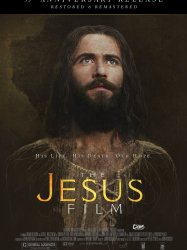
Jesus (1979)
, 1h55Directed by John Heyman, Peter Sykes, John Krish
Origin USA
Genres Drama, Biography, Fantasy, Historical
Themes Films set in Africa, Films about religion, Films about sexuality, Films based on the Bible, Portrayals of Jesus in film, Films about virginity
Actors Brian Deacon, Yosef Shiloach, Alexander Scourby, Richard Kiley, Eli Danker, Mosko Alkalai
La vie de Jésus Christ en suivant principalement l'évangile de Luc de la Bible.

Secondo Ponzio Pilato (1988)
, 1h45Directed by Luigi Magni
Origin Italie
Genres Drama, Historical
Themes Films about religion, Films based on the Bible, Portrayals of Jesus in film
Actors Nino Manfredi, Stefania Sandrelli, Lando Buzzanca, Flavio Bucci, Antonio Pierfederici, Mario Scaccia
The Roman tribune Pontius Pilate then runs Jesus Christ and then, never mind, allows Christ to be executed after being scourged. Crucified and dead, Jesus Christ promises to the faithful that would be resurrected three days after his earthly death. From this point Pontius Pilate begins to be opposed and hated by the Roman people that he realizes his mistake and that the Jews, who in turn are severely punished by the Emperor Tiberius.

Mary of Nazareth (1995)
, 1h45Directed by Jean Delannoy, Michel Leroy
Origin France
Genres Drama, Comedy-drama
Themes Films about religion, Films based on the Bible, Portrayals of Jesus in film
Actors Myriam Muller, Francis Lalanne, Didier Bienaimé, Marc de Jonge, Myriam Mézières, Jean-Marc Bory
Le film raconte la naissance, la vie, la mort et la résurrection de Jésus, à travers le regard de sa mère, Marie de Nazareth, la sainte Vierge Marie, humble femme, sans péché, honorée d'être la mère du Christ.

Star of Bethlehem (1912)
, 1h46Directed by Lawrence Marston
Origin USA
Genres Drama
Themes Films set in Africa, Christmas films, Films about religion, Films about sexuality, Films based on the Bible, Portrayals of Jesus in film, Films about virginity
Actors Florence La Badie, William Russell, James Cruze, Harry Benham, Justus D. Barnes, David Henry Thompson
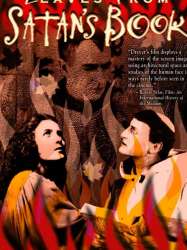
Leaves from Satan's Book (1920)
, 2h47Directed by Carl Theodor Dreyer
Origin Danemark
Genres Drama, Fantasy, Horror, Historical
Themes Films about religion, Demons in film, Films based on the Bible, Portrayals of Jesus in film, Histoire de France, French Revolution films
Actors Halvard Hoff, Johannes Meyer, Viggo Wiehe, Elith Pio, Clara Pontoppidan, Carlo Wieth
Satan has been cast out from hell and banished to Earth under decree of heaven. He can return, only through a series of temptations. However, for every soul who gives in to his tempting, one hundred years are added to his sentence. For every soul who resists, one thousand years are removed from his sentence. The film follows Satan throughout much of recorded history.
 , 1h42
, 1h42Directed by Robert Wiene
Origin German
Genres Drama, Historical
Themes Films set in Africa, Films about religion, Films based on the Bible, Portrayals of Jesus in film
Actors Henny Porten, Grigori Chmara, Asta Nielsen, Werner Krauss, Alexander Granach, Robert Taube
Un anarchiste emprisonné pour une tentative d'assassinat se voit raconter le récit de la Passion par l'aumônier de la prison, qui cherche à le convaincre qu'il vaut mieux se sacrifier que de prendre la vie de son ennemi. Ce cadre, tiré du roman, aurait eu pour fonction de donner un sens anti-bolchévique au récit biblique et aurait été ajouté à l'insu des acteurs principaux.

Barabbas (1953)
, 1h59Directed by Alf Sjöberg
Origin Suede
Genres Drama
Themes Films set in Africa, Seafaring films, Films about religion, Transport films, Films based on the Bible, Portrayals of Jesus in film
Actors Ulf Palme, Erik Strandmark, Hugo Björne, Segol Mann, Sture Ericson, Georg Årlin
Voir l'article consacré au roman éponyme adapté.
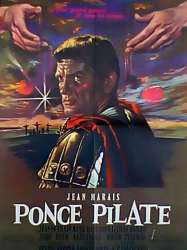
Pontius Pilate (1962)
, 1h40Directed by Irving Rapper, Gian Paolo Callegari
Origin Italie
Genres Drama, Historical, Peplum
Themes Films set in Africa, Films about religion, Films based on the Bible, Portrayals of Jesus in film
Actors Jean Marais, Jeanne Crain, Basil Rathbone, Letícia Román, Massimo Serato, Riccardo Garrone
Ponce Pilate, le procurateur de Judée, revient à Rome pour se défendre devant ses accusateurs, Caligula, le nouvel empereur, et le Sénat tout entier. Pendant son procès, Ponce Pilate revoit les dernières années de sa vie, depuis son arrivée en terre palestinienne, jusqu'à l'exécution d'un prophète poursuivi par la haine des Pharisiens, Jésus de Nazareth.
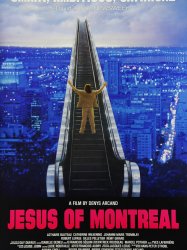
Jesus of Montreal (1989)
, 1h59Directed by Denys Arcand
Origin Canada
Genres Drama
Themes Films about religion, Théâtre, Portrayals of Jesus in film
Actors Lothaire Bluteau, Catherine Wilkening, Robert Lepage, Johanne-Marie Tremblay, Rémy Girard, Roy Dupuis
Le curé d'un sanctuaire et d'un lieu de pèlerinage (qui n'est pas nommé mais ressemble fortement à l'Oratoire Saint-Joseph) engage le jeune comédien Daniel, nouvellement de retour à Montréal, afin de monter une version rafraîchie de la Passion du Christ dans les jardins de ce lieu de culte. Ce dernier réunira une petite troupe de comédiens et en fera une interprétation libre, grandiose et sensible. Lors d'une représentation, des forces de l'ordre interviennent et la lourde croix tombe sur lui. Daniel est transporté en ambulance à «l'Hôpital St.-Marc», un endroit bondé et impitoyable, mais n'y reçoit aucun soin. Il quitte l'hôpital en état de choc et descend dans le métro. Inquiets, deux condisciples l'accompagnent... Daniel, en train de mourir, tient un dernier discours sur l'amour humain qui reste si inaccessible aux gens et qui finit par les tuer: «C'est le manque d'amour qui tue les gens», dit-il. Daniel perd encore connaissance dans le métro. Il est reçu avec humanité et professionnalisme à l'hôpital juif, mais il est trop tard. Ses condisciples donnent «son corps» aux fins de la transplantation. Hautement symbolique, un homme reçoit le cœur et une femme les yeux.

The Man from Earth (2007)
, 1h29Directed by Richard Schenkman
Origin USA
Genres Drama, Science fiction, Fantasy
Themes Films about religion, Films based on the Bible, Portrayals of Jesus in film
Actors John Billingsley, David Lee Smith, Tony Todd, William Katt, Richard Riehle, Alexis Thorpe
The film begins with Professor John Oldman (David Lee Smith) packing his belongings onto his truck, preparing to move to a new home. His colleagues show up to give him an impromptu farewell party: Harry (John Billingsley), a biologist; Edith (Ellen Crawford), an art history professor and devout Christian; Dan (Tony Todd), an anthropologist; Sandy (Annika Peterson), a historian who is in love with John; Dr. Will Gruber (Richard Riehle), a psychiatrist; Art (William Katt), an archaeologist; and his student Linda (Alexis Thorpe).

Parable (1964)
, 20minutesDirected by Rolf Forsberg
Genres Drama, Fantasy
Themes Films set in Africa, Films about religion, Films based on the Bible, Portrayals of Jesus in film
Actors Madhur Jaffrey, Saeed Jaffrey
The film Parable is presented through action and music alone and has no dialogue. It tells the story of handful of people working in an old fashioned circus under the rule of Magnus, a puppeteer who strings up human beings as living marionettes and controls their every move. Christ (Clarence Mitchell) is represented as a clown dressed in white, riding atop a donkey. The clown travels around the circus helping people with their problems and gaining followers until he finally takes the place of Magnus's human puppets and is strung up and murdered. Transformed by the clown's sacrifice, Magnus smears his face with white greasepaint and takes the clown's place on the donkey as Christ resurrected.
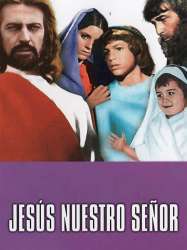
Jesús, nuestro Señor (1971)
, 1h55Directed by Miguel Zacarías
Themes Films set in Africa, Films about religion, Films about sexuality, Films based on the Bible, Portrayals of Jesus in film, Films about virginity
Actors Claudio Brook, Elsa Cárdenas, Carlos Agostí, Carlos Ancira, Tito Novaro

Zeitgeist (2007)
, 2h2Directed by Peter Joseph
Origin USA
Genres War, Documentary, Historical
Themes Films based on the September 11 attacks, La mondialisation, Films about religion, Films about terrorism, Transport films, Aviation films, Documentaire sur l'altermondialisme, Documentary films about law, Documentary films about war, Documentary films about historical events, Documentary films about politics, Documentary films about religion, Documentary films about technology, Documentary films about terrorism, Political films, Films based on the Bible, Films about Islam, Dans un avion, Portrayals of Jesus in film, Films about hijackings
Actors George Carlin
The film starts with animated visualizations, film segments and stock footage, a cartoon and audio quotes about spirituality by Chögyam Trungpa Rinpoche, then shots of war, explosions, and the September 11 attacks. Then the film's title screen is given. The introduction ends with a portion of a George Carlin monologue on religion accompanied by an animated cartoon. The rest of the film is in three parts with narration by Peter Joseph.
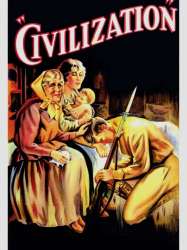
Civilization (1916)
, 1h28Directed by Thomas H. Ince, Reginald Barker, Jay Hunt, Raymond B. West, Walter Edwards
Origin USA
Genres Drama, War
Themes Seafaring films, Films about religion, Transport films, Underwater action films, Submarine films, Films based on the Bible, Portrayals of Jesus in film
Actors Howard C. Hickman, Enid Markey, George Fisher, Lola May, Herschel Mayall, Claire Du Brey
The film opens with the outbreak of a war in the previously peaceful kingdom of Wredpryd. Count Ferdinand is the inventor of a new submarine who is assigned to command the new ship in battle. The King of Wredpryd orders the Count to sink the "ProPatria" ("for my country"), a civilian ship that is believed to be carrying munitions as well as civilian passengers. In his mind's eye, the Count sees a vision of what would happen if he sent a torpedo crashing into the liner, and he recoils. He refuses to follow his orders, saying he is "obeying orders -- from a Higher Power." Realizing his crew will carry out the orders, the Count fights with the crew and blows up his submarine, sending it to the bottom of the sea.

Jesus (1973)
Directed by P. A. Thomas
Themes Films set in Africa, Films about religion, Films about sexuality, Films based on the Bible, Portrayals of Jesus in film, Films about virginity
Actors Thikkurissy Sukumaran Nair, Gemini Ganesan, M. N. Nambiar, K. P. Ummer, Jose Prakash, Bahadoor
King Herod has ruled Judea for over 37 years and believes himself to be supreme. When three wise men from the Far East come to visit him, he is initially pleased, but this pleasure turns to anger when he finds out that they have traveled all the way to witness the birth of the son of God. After they depart, he instructs his Prime Minister to kill all children under the age of 2 years. Herod's instructions are carried out, but they don't find the baby Jesus, born in a stable in Bethlehem. Jesus, son of Joseph and virgin Mary, has been destined to lead mankind to a better path but must face many challenges, temptations, betrayal from ones he trusted the most, humiliation, torture, crucification, and resurrection.
 Connection
Connection